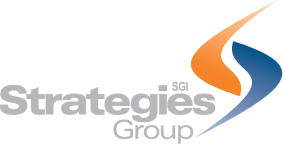
The construction industry thrives on precision, efficiency, and delivering top-notch projects. To ensure a construction company stays on track and continuously improves, it’s crucial to set and monitor Key Performance Indicators (KPIs) across various departments. These KPIs provide valuable insights into performance, aiding in decision-making and strategic planning. Let’s delve into the essential KPIs for each department within a construction firm:
CEO’s Radar:
- Revenue Growth: Monitoring year-over-year revenue increases.
- Profit Margin: Assessing gross and net profit margins per project or overall.
- Project Pipeline: Tracking the number and value of projects in the pipeline.
- Customer Satisfaction: Gathering feedback to ensure client contentment.
- Safety Performance: Measuring safety incidents and lost time due to accidents.
- Market Share: Determining the percentage of the local or regional market captured.
Finance Department’s Focus:
- Cost-to-Income Ratio: Ensuring efficient cost management.
- Cash Flow: Monitoring the regular inflow and outflow of cash.
- Project Budget Adherence: Comparing actual project costs against budgets.
- Accounts Receivable Turnover: Evaluating the efficiency in collecting payments.
- Debt-to-Equity Ratio: Assessing financial leverage and risk.
- Return on Investment (ROI) per Project: Analyzing project profitability.
Operations Department’s Observations:
- Project Timelines: Ensuring adherence to schedules and milestones.
- Quality Metrics: Assessing defects or rework rates on completed projects.
- Resource Utilization: Efficiently using equipment, materials, and labor.
- Safety Incidents: Monitoring and reducing workplace accidents.
- Project Profitability: Assessing the profitability of individual projects.
- Construction Delays: Identifying and mitigating project delays.
Human Resources Department’s Lens:
- Employee Turnover Rate: Tracking the percentage of employees leaving.
- Training Hours: Investing in employee training and development.
- Employee Satisfaction: Gathering feedback to enhance workplace happiness.
- Safety Training Compliance: Ensuring all employees undergo necessary safety training.
- Labor Productivity: Measuring work output per employee.
Sales and Marketing’s Metrics:
- Lead Generation: Tracking the number of leads generated.
- Conversion Rate: Calculating the percentage of leads converted into projects.
- Sales Growth: Comparing sales figures over specific periods.
- Customer Acquisition Cost: Evaluating the cost of acquiring a new customer.
- Marketing ROI: Assessing the effectiveness of marketing campaigns.
- Customer Retention Rate: Monitoring the percentage of retained customers.
These KPIs serve as vital tools, enabling construction companies to monitor performance, make informed decisions, and drive success in the industry. Customizing these indicators to suit specific company goals and market conditions is key to achieving sustained growth and excellence.
At the heart of a successful construction business lies a commitment to continuous improvement, and these KPIs act as guiding lights, illuminating the path towards success.
To learn more about how to effectively track these KPIs are more by scheduling a free systems audit with us today.
